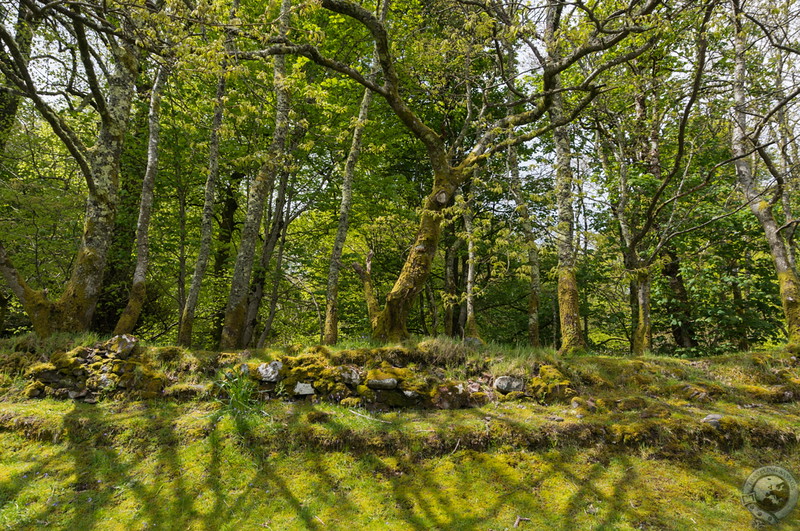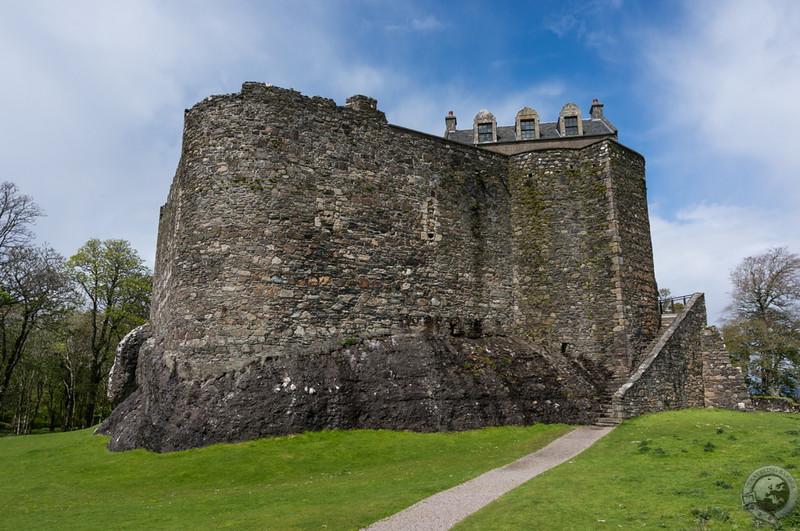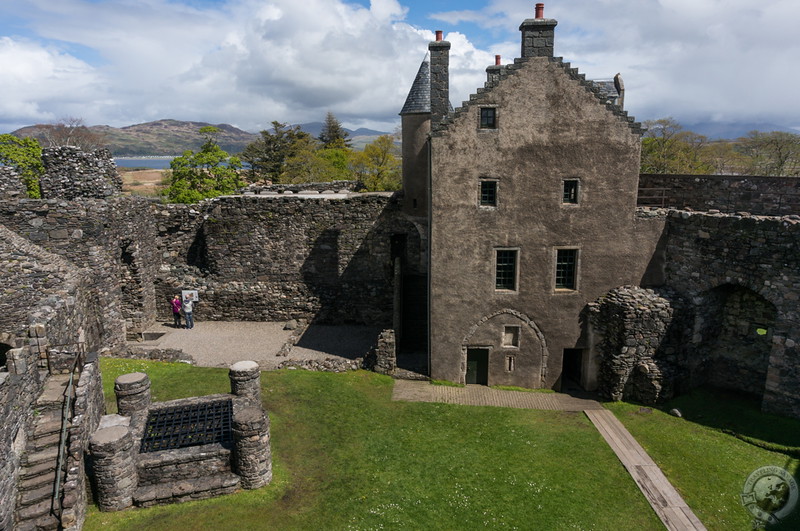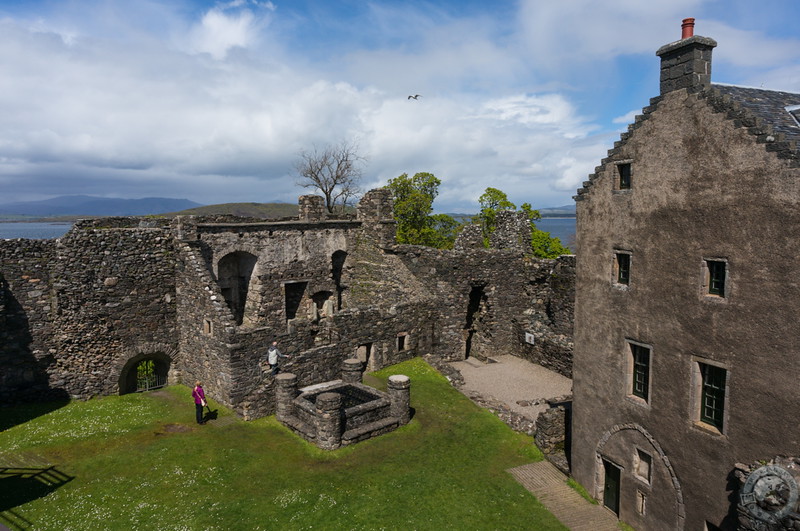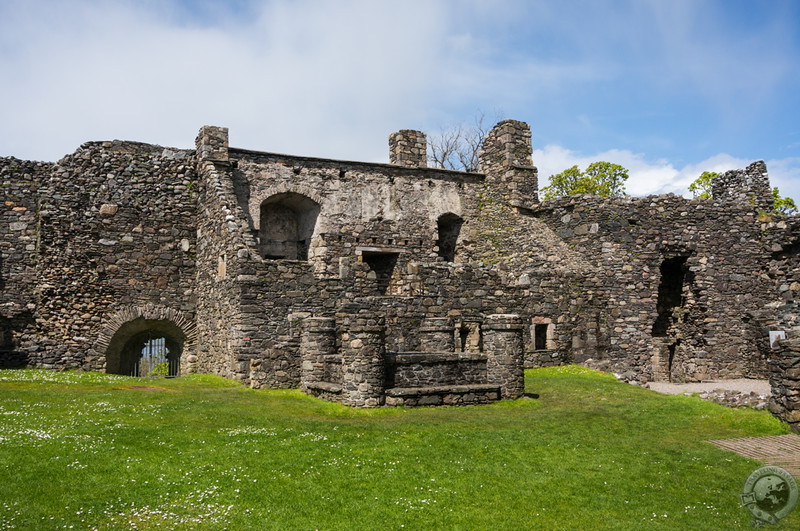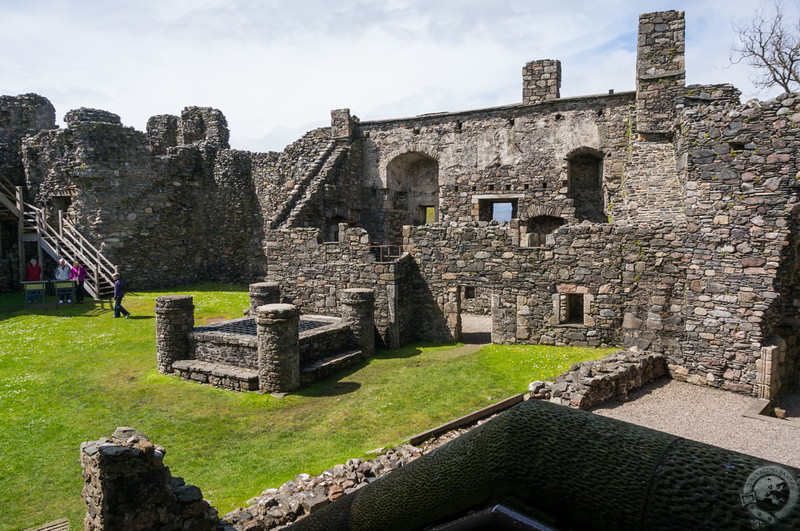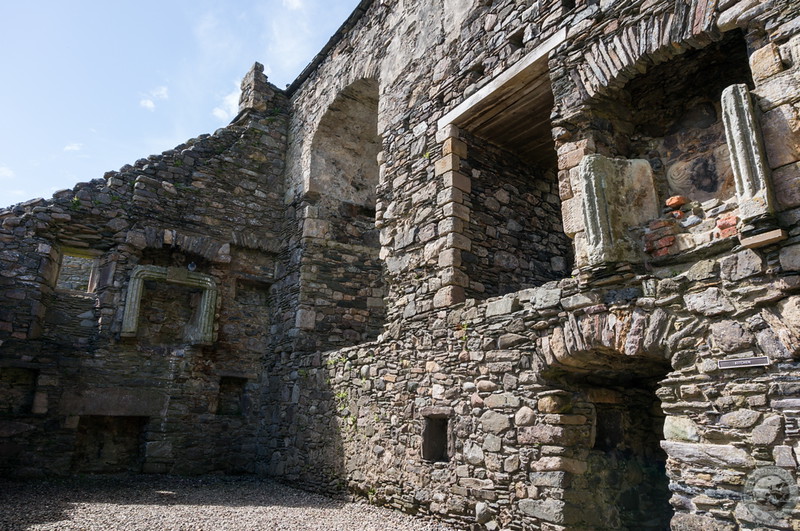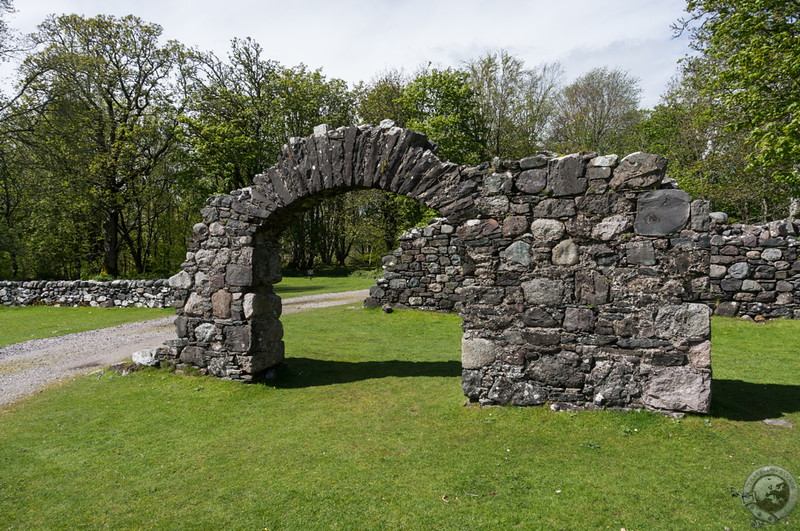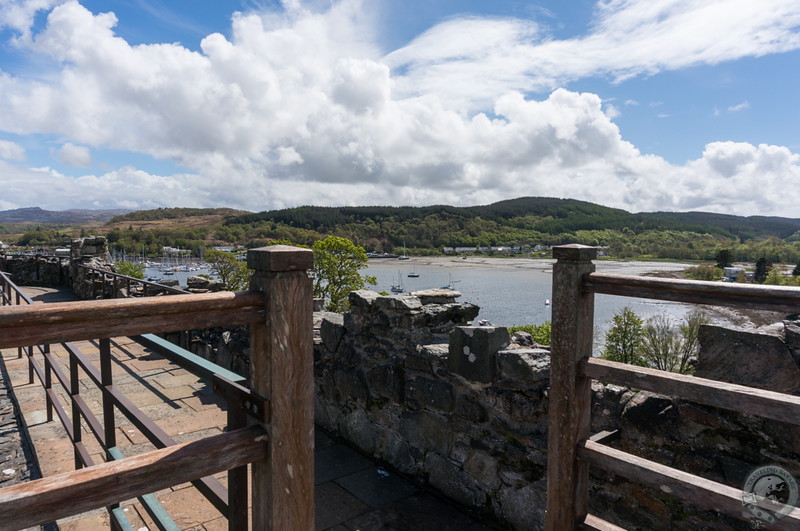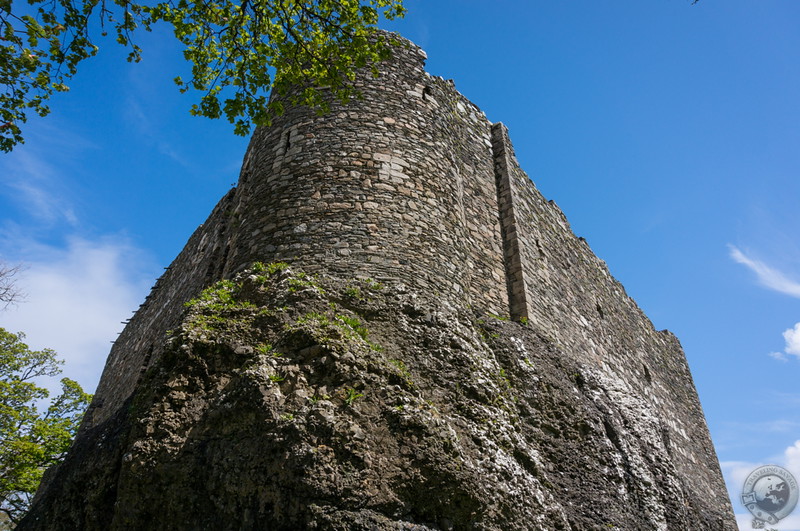Hardly a ten-minute drive north of Oban stands one of the oldest castles in all of Scotland. Dunstaffnage Castle looms from a rocky promontory and glowers across a key junction of western Scotland’s sea lanes, guarding the entrance to Loch Etive and protecting the Pass of Brander from Scotland’s enemies. A fortification has stood here for a very long time — some posit it may have been a Dál Riatan stronghold as far back as the 7th century — and the impressive structure visible today was largely constructed in the 1200s.
Old castles like Dunstaffnage are my favorite kind of castle because they were functional, defensive fortifications, not the gaudy, romantic showpieces built later that were more country home than anything else. The only windows at Dunstaffnage are arrow slits, the only doors are a portcullis and stout oaken gates. Before the advent of the gun, this was a place that only starvation and disease could overcome. Imagine sailing your fleet through the western isles only to come upon this bastion of might and influence.
Such scenarios were commonplace at Dunstaffnage for its history is long and violent.
Glorious sun shone down on the day I visited Dunstaffnage Castle this past May. The light splayed through the trees standing on the castle’s pretty grounds and glistened on the waves of Ardmucknish Bay where a host of yachts lay at anchor in the marina. A long, level path leads out onto the promontory where Dunstaffnage’s gray eminence stands impressively against the sea. A broad, high curtain wall extends around the castle, punctuated by a trio of round towers. Sarah and I purchased our entry tickets at a small cottage beyond the walls before climbing the steep staircase leading to the entry.
The records of Dunstaffnage’s founding are somewhat hazy, old as they are, but it’s believed the present castle was built around 1220 by Duncan MacDougall, grandson of the famous Somerled, King of the Isles. At the time, this region was part of Norway, and the ensuing decades bore witness to the bloody struggle between the two nations. By 1266, this area was part of Scotland, but it was only a few short decades later that the titanic battle for Scottish independence from England began. Such wild and violent times!
Inside the castle walls, I quickly made my way up to the wallwalk where warriors would have raised their great shields in defense of Dunstaffnage. I can imagine the mixture of fear and courage they must have felt when Robert the Bruce besieged this castle in 1309 after his victory at the Pass of Brander. Dunstaffnage Castle passed into royal holdings after the Bruce’s successful siege, and by the 15th century it was the Campbells, earls of Argyll, who claimed this castle as their own. The Campbells held the castle for the next 300 years, and they proved to be a troublesome lot to the Crown. During these centuries, the Campbells made few significant changes to Dunstaffnage, the main exception being the rebuilding of the gatehouse and tower. It is truly amazing how much of the original 13th-century castle remains today. Can you imagine any of our modern buildings lasting 800 years?
Dunstaffnage Castle was last garrisoned during the Jacobite Uprising of 1745. Government troops held the castle and waited here to defy Bonnie Prince Charlie’s military might, but this clash never came to pass. It was, however, the site of Flora MacDonald’s imprisonment for a short time. After the Bonnie Prince’s defeat at Culloden, he fled west to the Inner Hebrides where he met Ms. McDonald. She helped him escape Scotland, and she was later arrested by the English for being an accomplice of the failed usurper.
While Dunstaffnage Castle’s rich history centers around times of conflict, it’s worth pointing out that it was also lived in during times of peace along the Firth of Lorn. More than just a defensive bulwark, Dunstaffnage contained a guest house, barracks, estate office, law court, and prison. It was here that the lord of Lorn’s tenants came to pay their rents and even pray, for there is a small chapel just a couple of hundred yards away in the nettle-thick forest.
The view from atop the battlements is so good I should have stayed up there until sunset, which would have been a sight to behold. Alas, time was not on my side, and there were others places calling my name (like the Fairy Bridge). Dunstaffnage Castle is a truly impressive pile unique in its age and the quality of its construction. This is a must-see place for architecture, history, and scenery buffs whose travels take them to the western seaboard near Oban.

